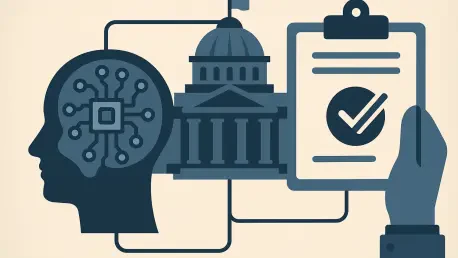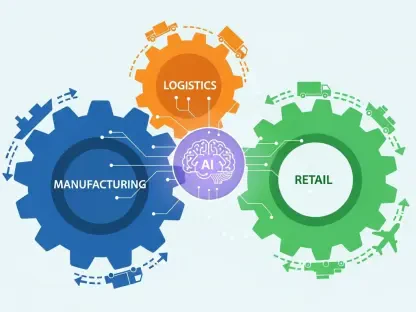As artificial intelligence continues to advance at an unprecedented pace, the debate surrounding its regulation has intensified. Recently, a legislative proposal introduced by House Republicans has sparked considerable controversy by advocating a decade-long ban on state-level AI regulation in the United States. The proposed moratorium, embedded within the Budget Reconciliation Bill, seeks to centralize oversight at the federal level by precluding states from enacting their own regulations tailored to AI technologies. This initiative aims to foster innovation while raising significant concerns about the potential absence of localized governance and oversight in AI-related activities. These differing perspectives highlight key issues, sparking a critical conversation about the balance between technological advancement and the imperative for governance.
The Proposal for Unified Federal Oversight
Federal Centralization vs. State Autonomy
The proposal’s essence lies in the establishment of a unified federal oversight mechanism that would prevent states and local governments from implementing AI-specific regulations until 2035. This moratorium would mean neither state nor political subdivision could enact laws or enforce regulations regarding AI models, systems, or automated decision-making processes. Proponents argue that this approach can prevent fragmented regulatory landscapes across the nation, thereby supporting innovation by reducing the complexity businesses face in compliance with varying state laws. Nonetheless, the absence of localized regulatory frameworks raises concerns regarding a lack of oversight, potentially granting undue power to private enterprises lacking appropriate checks and balances.
The decision to block state regulations is intended to streamline AI deployment processes and foster innovation. However, such a move raises the question of whether centralized federal oversight can adequately replace nuanced, locally informed policies. Advocates of federal centralization assert that a cohesive framework would facilitate the development of AI at a consistent and accelerated pace, unencumbered by the patchwork of state regulations. Conversely, opponents warn that stifling state autonomy could eliminate essential consumer protections, particularly in areas with unique privacy concerns or specialized industry applications. This dualistic stance emphasizes the necessity of striking a balance between promoting technological progress and safeguarding public interest through effective regulation.
Industry and Expert Reactions
The introduction of this legislative proposal has sparked diverse reactions from industry experts, regulators, and various stakeholders within the AI sector. While some view the moratorium as a positive stride toward streamlining fast-paced AI advancements, others express apprehension over potential regulatory vacuums. Advocates for stronger safeguards caution that the absence of state-specific regulations could hinder accountability, leaving critical decisions about AI governance largely in the hands of corporations. A prevailing concern is that the centralized approach may fail to address unique regional dynamics, underscoring the need for a more comprehensive evaluation of AI’s societal implications.
Many industry leaders acknowledge the complexity of navigating multiple state regulations and welcome the idea of a unified framework. However, they also recognize the indispensable role of state oversight in maintaining checks and balances on AI’s deployment. Federal legislation that tempers industry interests with ethical considerations is crucial to ensure the positive evolution of AI technologies without compromising consumer rights. As pioneers in the field continue to explore the potential of AI, it becomes imperative to engage in meaningful dialogue—balancing innovation with safeguarding against risks—to shape regulatory approaches conducive to technological advancement while prioritizing public welfare.
Global Regulatory Trends and Implications
U.S. vs. European Union Approaches
In the context of AI regulation, the divergence between the United States and the European Union is stark and illustrative of broader global trends. While the U.S. considers easing state-level restrictions to fuel innovation, the EU has implemented the AI Act, a comprehensive legal framework imposing stringent controls on high-risk AI systems. This regulatory mismatch creates challenges for multinational enterprises that need to navigate conflicting requirements across different jurisdictions. As they seek to harmonize their operations, companies could face heightened compliance costs and complex operational intricacies, ultimately impacting their global competitiveness.
Despite these challenges, international businesses have demonstrated resilience in adapting to diverse regulatory landscapes. The U.S. approach, contrasting with the EU’s regulatory rigor, invites scrutiny on the effects of divergent policies on cross-border collaborations and technological advancements. Harmonization efforts, whether through bilateral agreements or multilateral cooperation, could potentially mitigate these challenges. Yet, the question remains: can the U.S. borrow from the EU’s stringent regulatory model while still preserving the innovative spirit that underpins its AI industry? This interplay between regulation and innovation must be navigated with foresight and prudence, ensuring a balanced alignment of local practices with global norms.
Balancing Innovation and Consumer Protection
The absence of state-specific AI regulations raises pressing questions about consumer protection and data privacy. While states have been establishing oversight frameworks that include transparency and data protection measures, the moratorium threatens to nullify these efforts. Some experts argue this legislative move could undermine protections related to consumers’ data handling and consent by AI systems. Without local regulations, consumer rights may be at a heightened risk. There has been significant debate regarding whether federal oversight can effectively address these concerns, especially when faced with rapidly evolving AI technologies that present new ethical and privacy challenges.
Striking a delicate balance between fostering AI innovation and ensuring robust consumer protection is pivotal. Many stakeholders emphasize the importance of comprehensive data protection policies that align with technological developments, underscoring that innovation should not come at the expense of consumer rights. Ultimately, evolving AI ecosystems must prioritize transparency, accountability, and ethical considerations to uphold the trust of consumers and society at large. As policymakers deliberate on crafting suitable regulatory measures, it is incumbent upon them to harmonize AI advancement with meaningful protections, fostering an equitable environment where technological progress and societal values coexist.
Anticipating Future Implications
Legal and Operational Challenges
Despite its intention to simplify compliance, the proposed moratorium may inadvertently create new legal and operational challenges for AI enterprises. Experts have voiced concerns regarding the potential increase in legal uncertainties, as the absence of specific regulations could lead to more litigation. The reliance on judicial processes to resolve AI-related disputes, without the guidance of established regulations, may prove to be a costly and resource-intensive endeavor. For businesses navigating this landscape, the prospect of facing legal battles without precedent can be daunting. It also raises questions about the adequacy of existing legal frameworks in addressing AI-related risks and infractions.
The transition to federal oversight involves significant operational adjustments for companies currently governed by state regulations. Setting new compliance standards, realigning business practices, and reevaluating data-handling protocols are essential steps in adapting to the shifting regulatory environment. Companies may also need to invest in legal expertise to navigate the complexities of litigation, potentially increasing operational costs. These considerations underscore the need for clear, well-defined federal guidelines that provide predictability and transparency to aid enterprises in their strategic planning and operational activities.
Federal Government’s Role and Corporate Responsibility
The federal government, while restricting state regulatory efforts, aims to heighten its involvement in AI through a proposed $500 million allocation to the Department of Commerce. This investment intends to modernize federal AI infrastructure and improve cybersecurity measures. Acting as both a regulator and customer of AI technologies, the federal government wields significant influence over AI’s future directions in the United States. However, this dual role necessitates careful examination of potential conflicts of interest, ensuring that regulatory objectives align with national interests and ethical standards.
In anticipation of potential regulatory gaps, many large enterprises have proactively established AI governance councils. These councils are tasked with developing internal ethical guidelines and frameworks to mitigate risks associated with AI deployment in the absence of formal regulation. Though these self-regulatory initiatives are a positive step forward, experts caution that they are not substitutes for statutory accountability. Organizations must ensure corporate practices align with public interest, reflecting ethical considerations and societal norms. In the evolving landscape of AI governance, fostering collaboration among industry stakeholders, policymakers, and public entities is pivotal to crafting an equitable regulatory environment.
Crafting a Balanced Approach
The core of the proposal is the creation of a federal oversight system to halt states and local governments from setting AI-specific regulations until 2035. This pause would prevent any state or political body from passing laws or enforcing rules about AI models, systems, or automated decision processes. Supporters believe that this method can prevent a jumbled regulatory environment nationwide, thus fostering innovation by reducing the complexity businesses encounter when trying to comply with diverse state laws. However, the lack of regional regulatory frameworks triggers concerns about insufficient oversight, possibly giving excessive control to private entities without necessary checks and balances.
Blocking state regulations aims to simplify the AI rollout and enhance innovation. Yet, it questions if federal oversight can effectively replace locally tailored policies. Advocates of a centralized approach argue that a uniform framework supports AI development at a steady, fast pace without the hindrance of varied state laws. Critics caution that curbing state power might remove crucial consumer protections, especially in areas with distinct privacy issues or specific industry needs. This perspective highlights the need to balance technological advancement with public interest through smart regulation.









